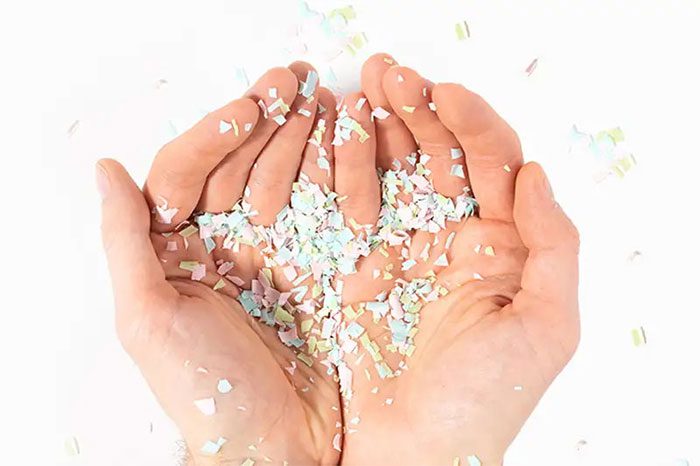According to a study, there are up to 12,000 microplastics in one liter of water. This is a new tragedy, as the number of microplastics in the ocean exceeds the number of stars in the universe.
The 26th Conference of the Parties to the United Nations Framework Convention on Climate Change, abbreviated as COP26, was held in Glasgow, Scotland (United Kingdom) in November 2021. Nearly 200 national delegations from around the world participated in COP26, demonstrating how much attention world leaders are paying to the issue of climate change.

Plastic waste is a “silent killer” for human health. (Image source: Internet).
COP26 achieved significant agreements and commitments from participating countries. However, 10 days before this conference, a piece of information was raised that drew international attention. Specifically, according to information from the United Nations Environment Programme (UNEP), every minute, 1 million plastic drinking bottles are consumed worldwide. This is a new tragedy as microplastics in the ocean outnumber the known stars in the universe: up to 12,000 microplastics per liter of water. Many experts have confirmed that, at this moment, it can be asserted that plastics are also a climate issue.
Mr. Ta Anh Tuan – Representative of the World Wide Fund for Nature (WWF) in Vietnam once emphasized that the global marine ecosystem is facing threats related to plastic waste, stemming from convenient, inexpensive items that have been tightly linked to human life for many years. In particular, ocean plastic waste not only causes environmental pollution and increases greenhouse gas emissions, worsening the negative impacts of climate change, but also threatens the lives of marine creatures and, more broadly, human health.
Despite continuously disposing of plastic waste and plastic bags into the environment, very few people are aware of the unpredictable dangers posed by microplastics that threaten human life.
Mr. Dick Vethaak, an honorary professor of ecological toxicology at Vrije Universiteit Amsterdam (Netherlands), once shared that plastics should not be present in human blood, even though we are indeed living in a world filled with particulates, such as dust and pollen that humans breathe in daily. However, when released directly into the environment, plastic waste continuously fragments, breaking down into particles even smaller than a human hair, and then easily disperses into the air. Microplastics are absorbed into the human body through respiration when inhaling airborne plastic particles or through ingestion when consuming animals that contain microplastics.
In 2017, a study by scientists from Belgium showed that seafood lovers could consume up to 11,000 microplastic particles annually due to eating mussels, a popular dish in Belgium. Similarly, some scientists from Japan estimate that more than 24 trillion microplastic particles exist in the world’s oceans, equivalent to about 30 billion half-liter plastic bottles.
So, what are the health risks of microplastics to humans?
According to scientists, microplastics can enter the human body through respiration or ingestion and cause many harmful reactions, including:
Hormone disruption: Many chemicals in microplastics act as endocrine disruptors (e.g., BPA) like estrogen, testosterone, and insulin. They mimic these hormones when entering the body, disrupting their natural functions and causing adverse health effects, such as the development of polycystic ovary syndrome and reducing hormone levels that support reproductive health.
Moreover, microplastics also increase the risk of chronic diseases. Prolonged exposure to endocrine-disrupting microplastics raises the risk of type 2 diabetes and cardiovascular diseases.
From a scientific perspective, Professor Le Huy Ba from the Ho Chi Minh City University of Food Industry advises that, given the superior advantages recognized in many areas, we cannot completely reject the role of plastics, but must find ways to recover and process plastic waste according to recycling processes in a circular economy.
Through technological solutions, controlling and recovering plastic waste can prevent the alarming development of microplastics. Immediate and long-term measures include sorting waste right at the source to ensure that plastic waste is separated and thoroughly collected before processing.


















































